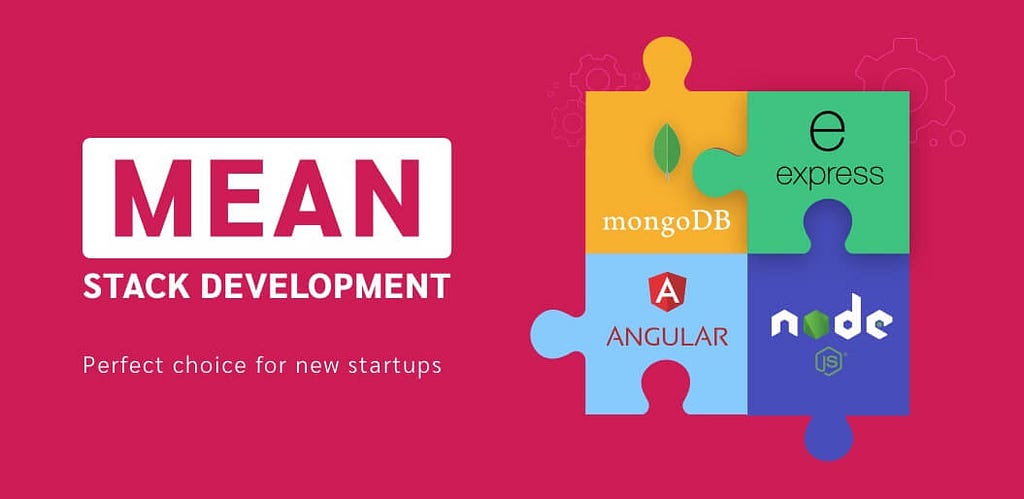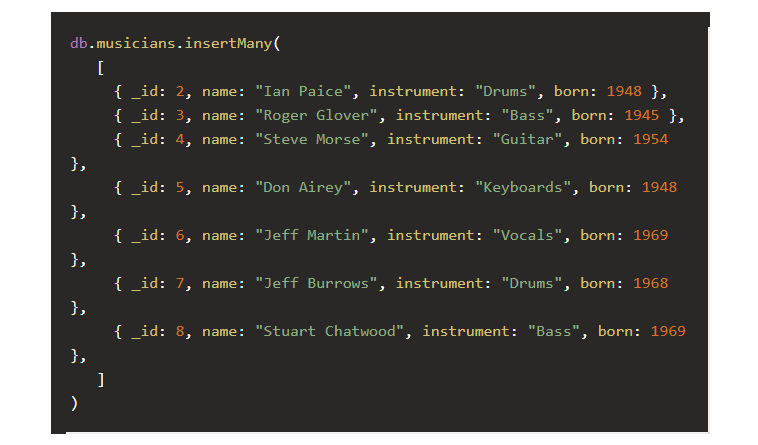Latest news about Bitcoin and all cryptocurrencies. Your daily crypto news habit.
Why MEAN is an ideal stack for large-scale eCommerce projects
It’s tough to work as a software developer. You invest time, money, and efforts learning some technology, and a new kid in the block steals all the charm with some new promises. MEAN stack was one such new kid in the block back in 2013 when Valeri Karpov coined the term MEAN.
Today, MEAN has come as a significant transition from traditional development methodologies and offers some massive performance improvements in the new web projects. It was only a few years ago that the MEAN stack was an infant technology, and now it’s poaching the developers from the LAMP stack’s territory.
What’s all the fuss about? What’s trendy about MEAN that it’s taking over the world of web development by storms? Who is backing this new technology?
Well, will know everything soon. Let’s know this kid in detail first.
Disclaimer: This content does not intend to poach members from the LAMP’s territory. It’s all about understanding the advantages of this stack, and knowing why developers are considering it as a suitable choice for large-scale developments.
What exactly is MEAN stack?
MEAN stack is a complete collection of certain frameworks required to develop an entire dynamic web project. The abbreviation expands as follows:
- MongoDB: For Database: A document-based database that uses JSON* to store data.
- Express.js: For back-end: A server-side JavaScript web application framework
- Angular.js: For front-end: A client-side JavaScript web application framework
- Node.js: For server-side runtime environment: A JavaScript server-side runtime environment
If you noticed the names, MEAN stack is all about JavaScript as its backbone. From back-end and front-end to the server-side, all can be written in the same programming language. Let’s see how MongoDB stands with JavaScript.
MongoDB: Best of both worlds
Where the MongoDB database is concerned, it’s a non-relational document-based database system. It stores data in BSON documents. BSON is nothing but a representation of JSON documents in binary-encoded format.
BSON adds further data types, ordered fields, and easy encoding and decoding for different languages. So BSON is JSON and JSON is, of course, JavaScript; JavaScript Object Notation to be exact. Moreover, because BSON is binary, it makes queries fast, rich, and lightweight.
Here is a sample JSON for inserting multiple documents in the MongoDB database:
The beauty of MongoDB is that you can implement an asynchronous execution using callback or promises. In the above example, you can add the following lines at the end to implement the asynchronous execution in the insertMany object:
Is MongoDB is better than MySQL?
As it is a non-relational and NoSQL database system, it does not have to store data in specific rows and columns like MySQL and other relational databases. MongoDB uses BSON key-value pair model to store data without considering the structure. While MySQL is represented as tables and use Structured Query Language.
Despite this, MongoDB still complies with the existing authentications, indexing, and data access like any MySQL database. As a result, it is so easy to adjust the schema in real-time with MongoDB, that too without breaking it. The Dynamic Schema makes the queries and web applications faster than those who rely on MySQL.
Please note: Node.js is compatible with both MySQL and NoSQL databases. Developers just prefer to use NoSQL for added benefits.
Express.js: A Node.js back-end web development framework
Express is nothing but a minimal and flexible form of Node.js web application framework. It is used in the MEAN stack for back-end development. However, it offers robust features required for all kinds of web and mobile app developments. It’s open source and is maintained by the Node.js foundation.
As a back-end framework to communicate with the server and handle HTTP requests from all parts of the application, it manages resource allocation as per the requests. As it is based on Node.js, it inherits all the properties of the Node. For example:
- It’s asynchronous and event-driven
- All of its libraries are non-blocking.
Its server does not wait for the outputs from API to return data and moves directly to the next API. It uses, notifications of events to respond to the server for the previous API request. This makes Node.js shopping cart and various other kinds of applications extremely fast.
Angular.js: A dynamic JavaScript UI development framework
AngularJS JavaScript framework is used in MEAN stack for UI development. It can be imported in a HTML file using <script> tag. Similar to Bootstrap, AngularJS extends HTML attributes using various Directives and also used for binding the data to HTML components.
With apt support from Google and a wide community, Angular.js is a highly active technology and incorporates the latest updates. What makes Angular.js useful in web development is its lightweight DOM manipulation.
Large projects require a lot of JavaScript to make UI appealing and engaging. However, using so much JavaScript in the code will only make the UI slow to load. Angular comes as a boon by minimizing the new JavaScript codes required in the file for DOM manipulation.
Add a simple snippet of code in the HTML file, and you can bind data to the HTML controls from Angular libraries without manually adding new JavaScript lines in the file. Something like this:
The best part is, distinct from static web forms, where you need to first fill the form and hit submit button to react, an Angular UI reacts dynamically to the user’s input without refreshing the entire page but only the portion of the components.
For example, a user is on the shopping cart review page where he/she is reviewing the items in the cart. Now, if a user decides to increase the quality of a certain product in the cart, the cart review page must refresh to update the new item quantity. However, with Angular.js, you don’t have to refresh the entire page to update the quantity in a Node js e-commerce shopping cart. The page will automatically fresh the quantity without reloading the entire page.
The same property can also be used to implement dynamic form validations, where users can be notified of the invalid inputs in the real-time without clicking on the submit button.
Please note: Angular.js can be compiled both on the server and client side. It can also be used to develop standalone native desktop or mobile apps
Node.js: A backend runtime environment
I would like to make one simple argument in support for Node.js here.
After years of development using stateless-web and stateless request-response model, Node.js finally has come to offer the web applications with real-time and two-way connections. Now both client and servers can start communication and trade data directly.
Node.js is an open-source server runtime environment developed on Google chrome V8 engine. It runs on all sorts of platforms like Windows, Linux, Mac, and Unix. As we saw how MEAN stack uses JavaScript in Front-end (Angular), back-end (Express), and in Database (BSON) as well. With Node.js, you can use JavaScript on the server as well.
Is it good to use JavaScript on the Server?
Well, Node.js is an asynchronous programming environment. As I explained how Express.js, which is based on Node.js, also follows the asynchronous approach. Because of this, Express.js does not require to wait for an API to respond, and can simply continue with the next request.
Express does all that using Node.js, which means Node can implement the same asynchronous and event-driven, non-blocking I/O model on the server as well. It ultimately makes communication with the server lightning fast.
Following this approach and many other benefits, Node js has proven itself a perfect technology partner for building solutions like:
- I/O inevitable Applications (PayPal)
- Media Streaming Applications (Netflix)
- Data Intensive Real-time Applications (Uber)
- JSON APIs based Applications (Amazon, GroupOn)
Node.js offers a resourceful and lightweight library with its online Node Package Manager (NPM). It allows a developer to access NPM to import open-source Node.js projects. One can simply use a command-line interface to fetch the required resources from the online NPM to use in version control, package installation, dependency management, and update regulation.
Leveraging NPM, you can re-use all those codes from the repository and keep your project lightweight despite implementing complex features.
So yes! Node.js is good on the server. There is no doubt a Node js e-commerce can be made incredibly fast and scalable using the node.js best practices.
All the technologies in the MEAN stack are backed by the giants like Google. All of them are blessed with some massive communities of active and skillful developers. It’s still new and continuously evolving. Let me tell you that MEAN is not alone, it has now extended further to form more advanced stack like MERN with React.js, MEVN with Vue.js, and MEN with Vanilla JS.
Why MEAN is an ideal stack for large-scale eCommerce projects? was originally published in Hacker Noon on Medium, where people are continuing the conversation by highlighting and responding to this story.
Disclaimer
The views and opinions expressed in this article are solely those of the authors and do not reflect the views of Bitcoin Insider. Every investment and trading move involves risk - this is especially true for cryptocurrencies given their volatility. We strongly advise our readers to conduct their own research when making a decision.



